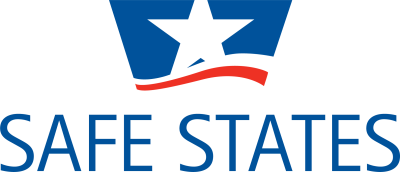New Guidance Released for Integrating Equity Into Statewide Injury and Violence Prevention

ATLANTA, June 15, 2023 (Newswire.com) - During a month that recognizes and celebrates diversity and freedom, the Safe States Alliance is pleased to release Building Equity into Safer States - new guidance for integrating anti-racism, health equity, and diversity, equity, and inclusion (DEI) principles into state-level injury and violence prevention (IVP) programs.
Developed through foundational work that began in 1997, the fundamental elements that are critical for high-functioning state-level IVP programs are known as the "core components." With nearly three decades of data and experience to draw upon, Safe States elevated the following six core components, integrating equity within each, as essential for an effective state IVP program:
- Build and sustain a solid, equitable, and stable infrastructure.
- Equitably collect, analyze, and disseminate injury and violence data.
- Select, implement, and evaluate effective program and equitable policy strategies.
- Engage diverse partners for collaboration.
- Effectively communicate culturally responsive information to key stakeholders.
- Provide health equity training and technical assistance.
While the original "Building Safer States" report was developed primarily for those involved in state-level IVP efforts, history has demonstrated that these core components are applicable in a variety of practice settings. "While the core components have stood the test of time as essential elements of capacity for a program, there is growing recognition that equity must be at the forefront of each and every aspect of these components," notes Richard Hamburg, Safe States Executive Director.
Health inequities in the United States are rooted in systems and structures that have historically underserved or oppressed certain groups. The burden of intentional and unintentional injuries is often higher for African Americans, Asian and Pacific Islanders, American Indian and Alaskan natives, LGBTQIA+, and other marginalized communities. Equity, therefore, must be at the foundation of any IVP program to truly have an effect on disproportionate burdens.
The new "Building Equity into Safer States" expands upon the previous editions and supports the work of IVP professionals, advocates, funders, researchers, elected officials, and the many other partners who are working to prevent injuries and violence. Integrating anti-racism, health equity, and DEI principles within each core component is essential for true prevention, and Safe States celebrates programs operationalizing these crucial considerations across all aspects of their work.
Safe States' efforts to elevate and incorporate equity within IVP are also guided by a vision and call to action supported by nearly 50 local, state, and national organizations. The vision and call to action were developed in concert with the National Collaborative for Health Equity, based on the Truth, Racial Healing & Transformation framework. The document details recommended actions that IVP practitioners and researchers can take to support more equitable outcomes for disadvantaged populations now and into the future.
Learn more about Safe States and its commitment to equity in IVP here.
Source: Safe States Alliance
